Long Bien Bridge, a timeless symbol of Hanoi, is more than just a traffic infrastructure; it’s a living “historical witness,” marking the ups and downs of the capital through numerous events. This first steel bridge spanning the Red River embodies unique architecture, blending French engineering with Vietnamese spirit, attracting visitors with its ancient beauty and heroic historical tales.
Long Bien Bridge: Over a Century of Witnessing History
Long Bien Bridge is not only a transportation project but also a cultural and historical symbol of Hanoi. Few know that this bridge with a melancholic appearance is the first steel bridge across the Red River, connecting Hoan Kiem and Long Bien districts.
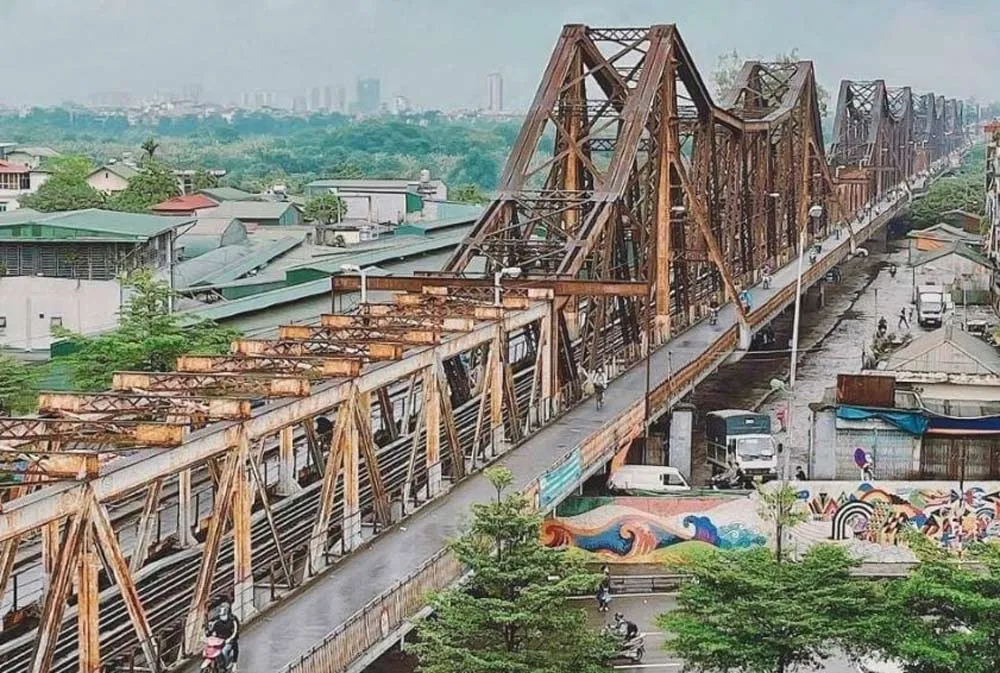
A Mark of Time: From Construction to Symbol
Built from 1898 to 1902 by the French company Daydé & Pillé, the mark of time is still etched on the metal plaque engraved with “1899 – 1902 – Daydé & Pillé – Paris” at the bridge’s entrance. After Hanoi’s liberation, the bridge was renamed Long Bien, a name that has become familiar and closely associated with the capital’s residents to this day.
Long Bien Bridge is not only a favorite destination for international tourists but also a symbol of the resilience and indomitable spirit of the Vietnamese people during the two resistances against France and America. The bridge has witnessed significant historical events, heroic moments, becoming an indispensable part of Hanoi residents’ memories.
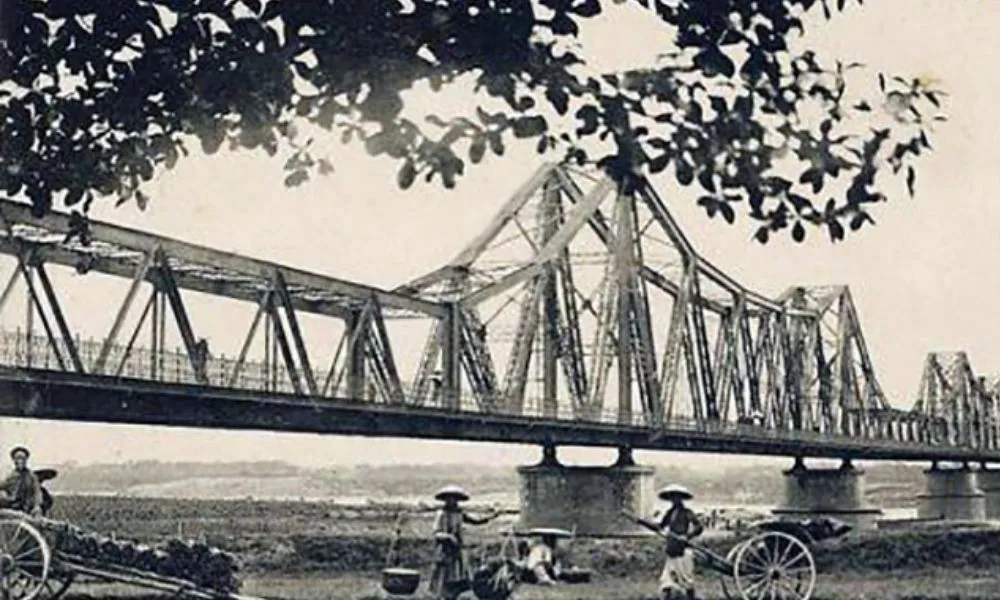
On September 2, 1945, Long Bien Bridge proudly welcomed people from all over the country flocking to Ba Dinh Square to witness President Ho Chi Minh read the Declaration of Independence, giving birth to the Democratic Republic of Vietnam. In October 1954, the bridge again witnessed the French troops withdrawing from Hanoi, giving way to the liberation army entering to take over the capital after the Geneva Accords. During the years of resistance against America, Long Bien Bridge became a vital transportation route, supporting the South with manpower and resources. The bridge was also a target of fierce bombing by the US Air Force, but the army and people of Hanoi resiliently defended it, turning the bridge into a solid “fortress.”
Today, Long Bien Bridge and the Red River still play an important role in trade and transportation, and are also a destination that evokes the nation’s heroic and resilient past.
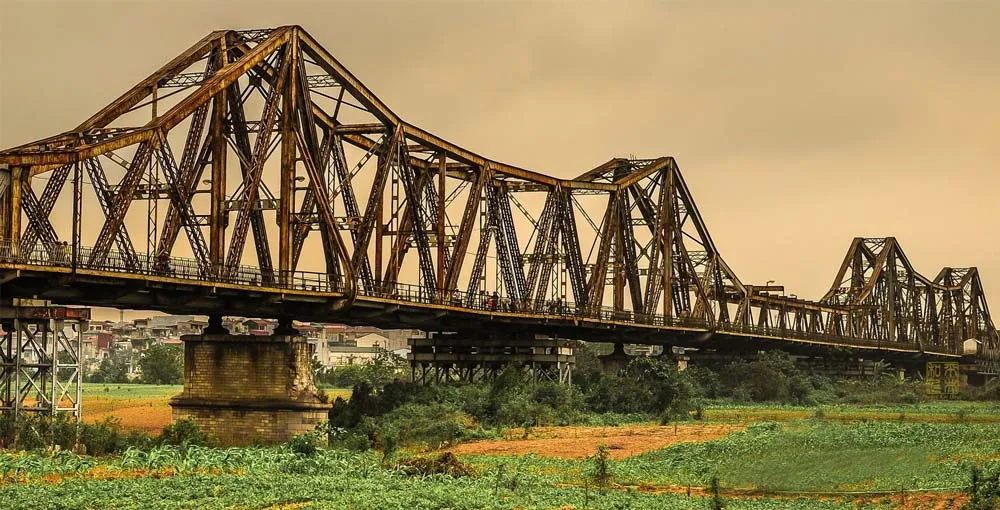
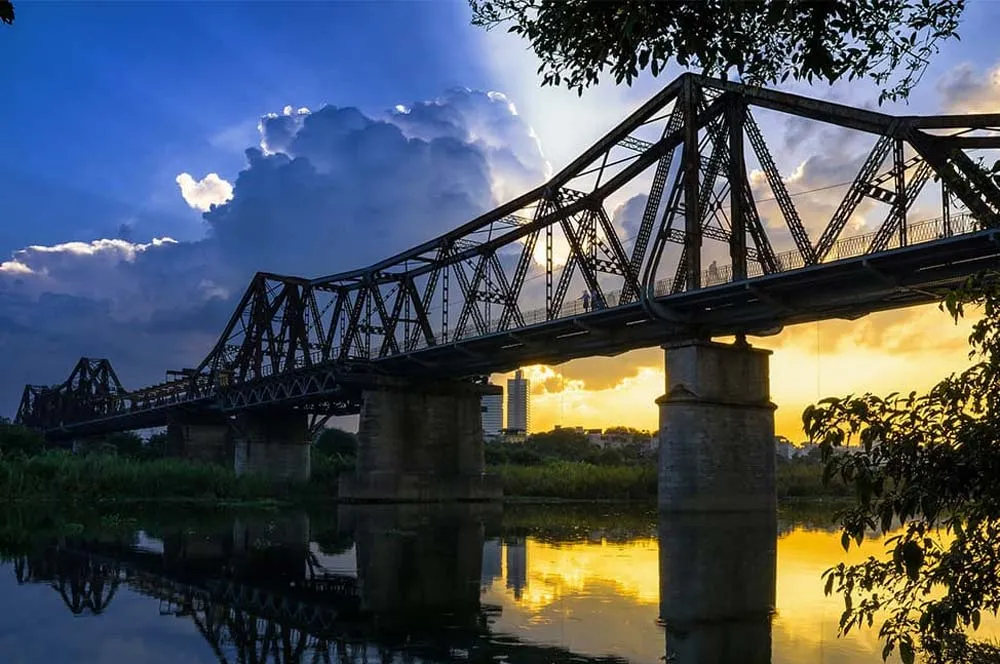
Journey to Long Bien Bridge: Travel Suggestions
Long Bien Bridge is located in a prime location, spanning the Red River, connecting Hoan Kiem, Ba Dinh, and Long Bien districts. However, getting to the bridge can be slightly difficult during peak hours due to heavy traffic.
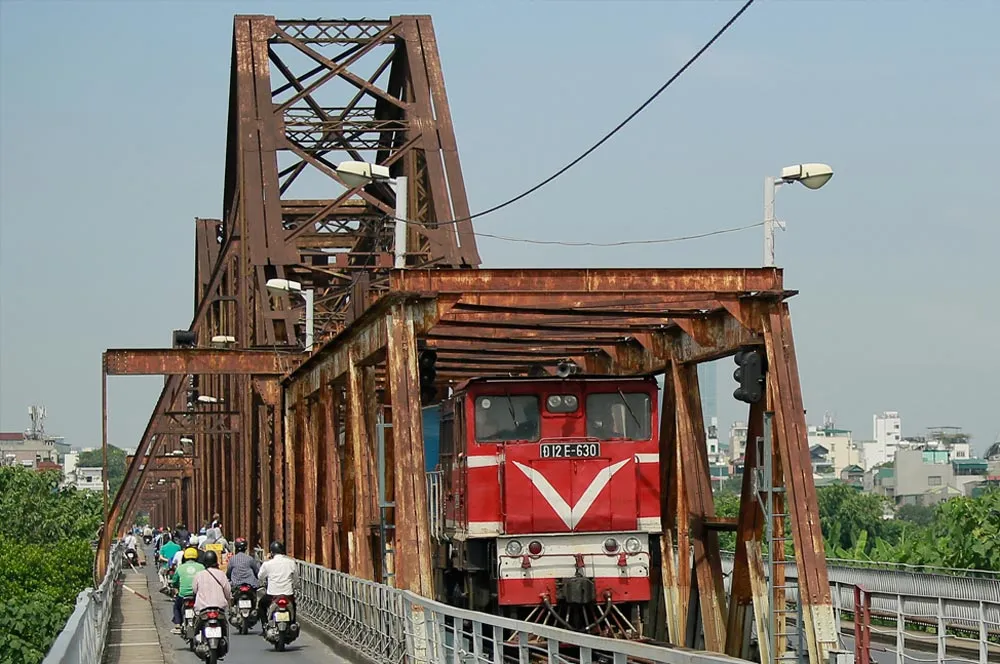
Some travel suggestions to Long Bien Bridge:
- Walking or cycling: Park your vehicle in parking lots in the Old Quarter area, then leisurely walk to the bridge. This is a great way to feel Hanoi’s rhythm of life and admire the ancient beauty of the bridge.
- Bus: Bus routes 01, 18, 34, 36 CT, 41, 50, and 55B all have stops near Long Bien Bridge, making it easy and economical to travel.
- Xanh SM Car: Choosing to travel by Xanh SM is a convenient, environmentally friendly way to save time and not worry about parking.

Unique Architecture: Harmony Between the West and Vietnamese Identity
Long Bien Bridge is not just a transportation project but also a work of art, harmoniously combining French architecture and Vietnamese cultural identity. The ancient, majestic beauty of the bridge blends with the poetic landscape of the Red River, creating a captivating scene.

Admiring Design and Structure
Long Bien Bridge has a total length of 2,290 meters, including 896 meters of approach bridge, 19 steel spans, and 20 high, sturdy pillars. The bridge’s structure is designed in French style, with a tightly layered structure, creating a shape like a winding dragon, both strong and soft. When newly inaugurated, Long Bien Bridge was likened to a “horizontal Eiffel Tower” and was the second longest bridge in the world, only after the Brooklyn Bridge in the US.
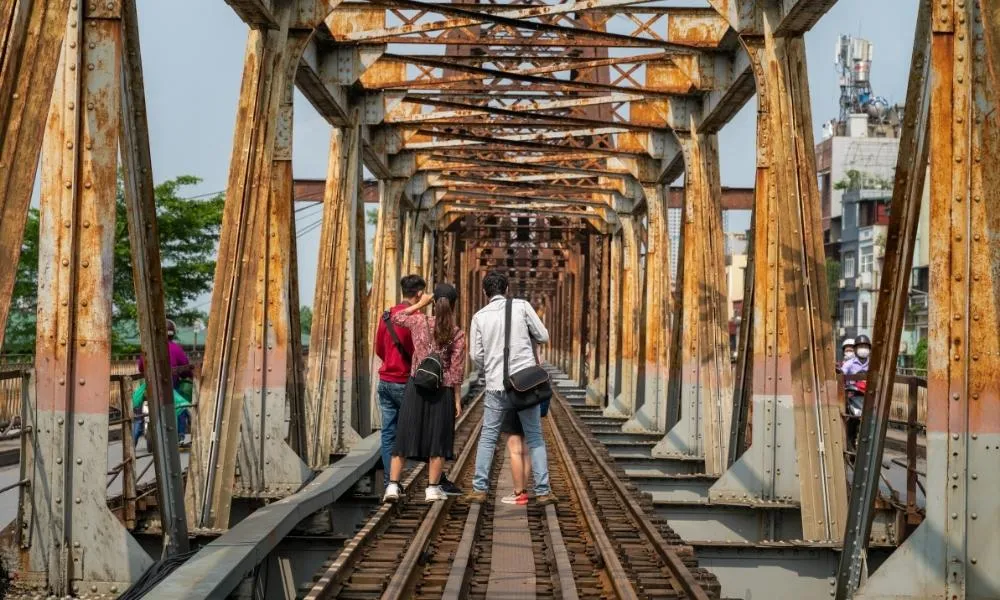
The bridge is 4.75 meters wide, including a single railway in the middle, two lanes for cars, motorbikes, bicycles, and a pedestrian lane on the outermost side. This design not only ensures solidity but also creates a graceful beauty, harmonious with the river landscape.

Building Materials: Enduring Through Time
Long Bien Bridge is mainly built of high-quality steel, applying modern construction techniques, ensuring durability and safety throughout its use. Details such as steel rivets and bridge pillars are meticulously crafted, providing both solidity and maintaining a graceful, delicate appearance.
Architectural Significance: Cultural Intersection
The architecture of Long Bien Bridge is a harmonious combination of French style and Vietnamese culture. The bridge has a simple, strong beauty, reflecting the resilient spirit of Hanoi people through the ages.
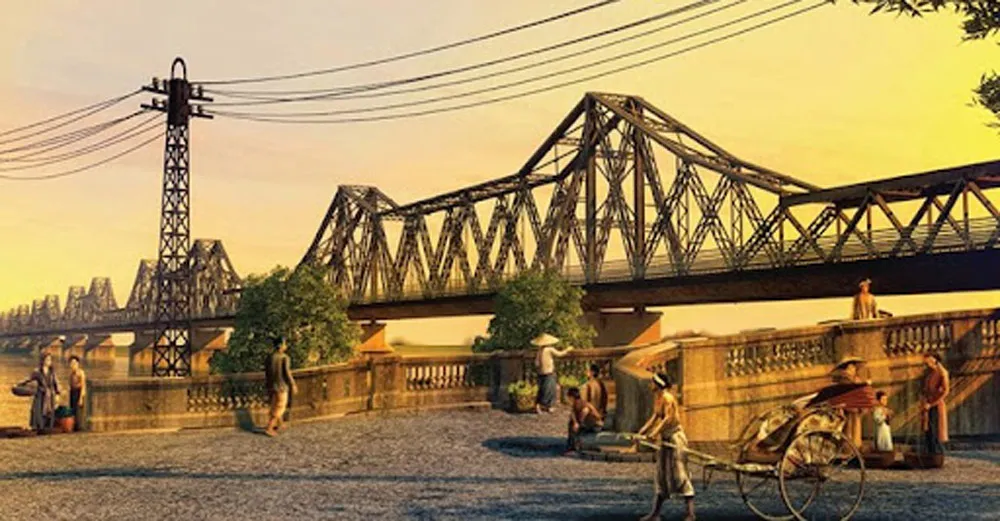
Prominent Highlight: An Irreplaceable Symbol
Although Hanoi today has many modern bridges spanning the Red River such as Thang Long Bridge, Thanh Tri Bridge, Vinh Tuy Bridge, etc., Long Bien Bridge remains a special, irreplaceable symbol in the hearts of the capital’s residents. The bridge stands out not only for its ancient architecture but also for its invaluable historical and cultural values. Long Bien Bridge was once the longest steel bridge in Southeast Asia, an ideal destination to watch the sunrise and sunset over the Red River.
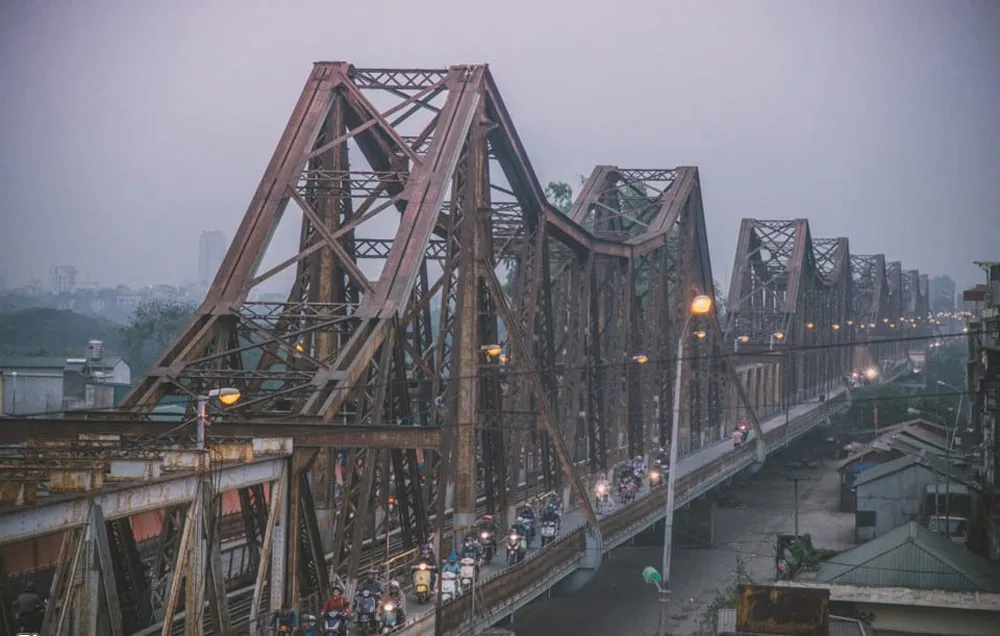
Historical Imprint: Witness Through Eras
Long Bien Bridge is not just a bridge, but also a living history book, recording important historical events of Vietnam. The bridge has witnessed ups and downs, from the colonial period, wars to the period of peace and development.
Colonial Period (1899 – 1945): Ambition of Conquest
Long Bien Bridge was built during the French colonial period, as evidence of the advanced construction techniques of the French and the ambition to exploit colonial Vietnam. The bridge played an important role in connecting Hanoi with the northern economic regions, especially the Hanoi – Hai Phong railway line, and was also a vital artery for transporting goods and military supplies in World War II.
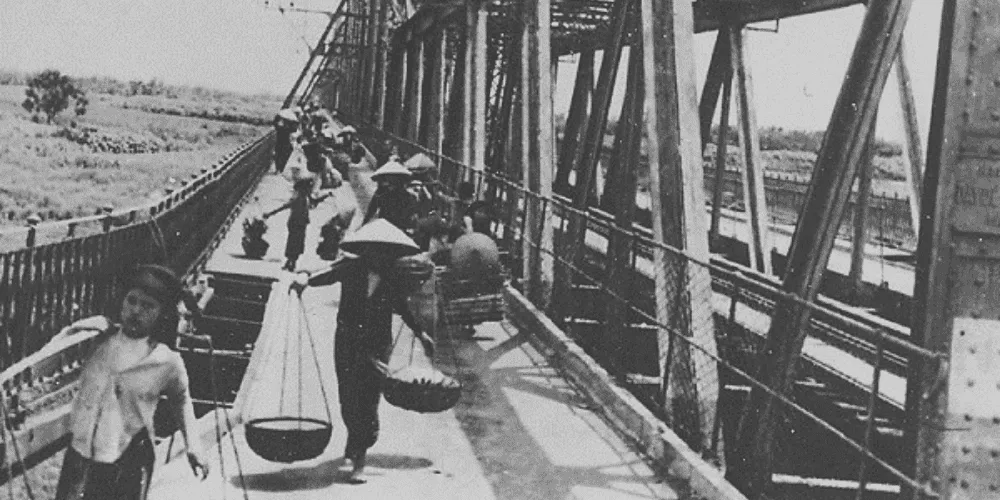
Resistance War Against France (1945 – 1954): Vital Artery
During the resistance war against France, Long Bien Bridge became an important route for transporting food and weapons to the Viet Bac war zone. The bridge was also the site of fierce battles between our army and people and the French colonialists. The times the bridge was damaged by bombs and bullets further deepened the image of the resilience of the Vietnamese people.
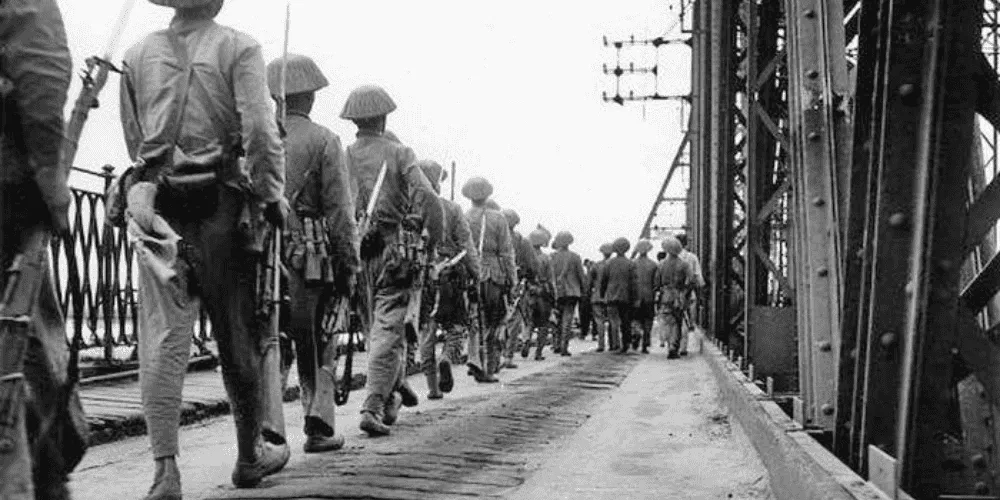
American War (1955 – 1975): Symbol of Indomitable Spirit
During the American War, Long Bien Bridge was repeatedly bombed by the US Air Force to cut off the North-South transportation route. Attacked more than 10 times, the bridge was heavily damaged. However, Long Bien Bridge was always quickly restored by bridge repair workers and Hanoi people. The image of people clinging to the bridge under bombs and bullets to protect it shows the patriotism and indomitable will of the nation.
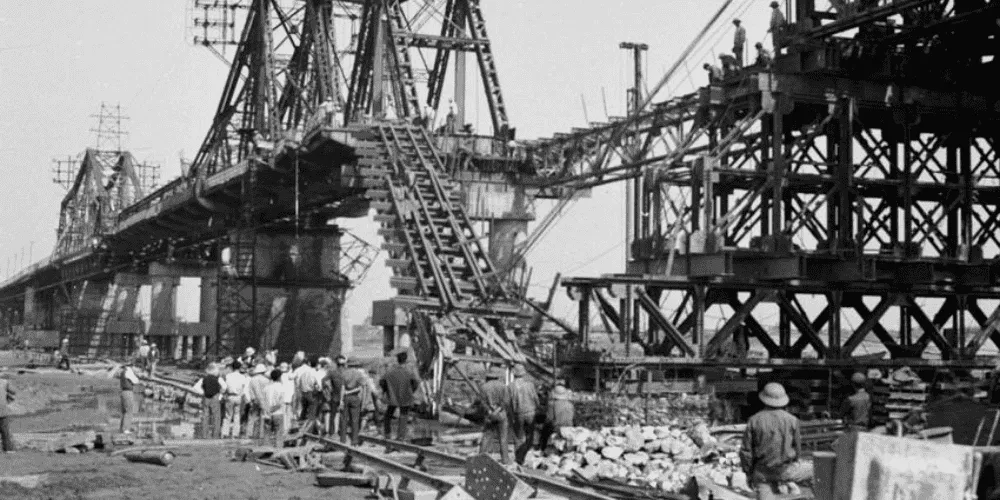
Peace and Renovation (1975 – Present): Cultural Heritage
After 1975, Long Bien Bridge gradually lost its main role in transportation. However, the bridge still stands proudly, preserving the memory of a painful but resilient Hanoi. The old bridge spans, covered in the colors of time, have become a source of inspiration for art, poetry, photography, and a familiar destination for those who want to explore history.

Conclusion
Long Bien Bridge is not only a unique architectural work but also a historical witness, a cultural symbol of Hanoi. The bridge has gone through many ups and downs with the country, witnessed important historical events, and become an indispensable part of the memories of the capital’s residents. Visiting Long Bien Bridge, tourists not only admire its ancient and unique beauty but also learn about the heroic history of the Vietnamese nation.